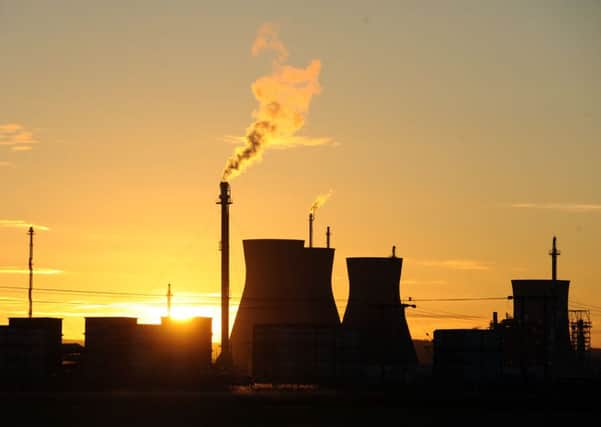Power plan for Grangemouth moves forward


The ambitious Grangemouth Energy Project is a team effort involving Falkirk Council, Scottish Government, Scottish Enterprise and companies in the area.
A taskforce set up in 2013 to assess the potential impact of the threatened closure of Ineos took up the challenge of finding out if a more resource efficient, low carbon, low cost energy solution to cut costs facing bosses - and householders - could be found.
Advertisement
Hide AdAdvertisement
Hide AdRenewable energy experts Mace Group Limited were hired to move the project forward.
A comprehensive appraisal of heat and power demand to tackle concerns of the cost burden facing business in the Grangemouth industrial complex has now identified a wide range of power generation options, including using some of the latest emerging renewable technologies, as possible opportunities for the Grangemouth Investment Zone and the Falkirk Gateway.
These include:
* industrial heat recovery;
* geothermal heat recovery;
* biomass combined heat and power;
* gas-fired combined heat and power.
The report highlighted interest in managing and reducing carbon emissions and the potential socio-economic benefits of developing district heating networks (DHN).
The re-use of waste heat is key to the scheme to eventually establish three DHNs to provide blanket coverage of the east, west and north.
Advertisement
Hide AdAdvertisement
Hide AdDeveloping the Eastern Network could cost upwards of £60 million to bring ‘on line’ - but still seen as being a potentially viable project based on existing demand and potential supply of heat from industry including the Ineos and CalaChem sites, Avondale and Kinneil Kerse landfill.
The council has been told using geothermal heat in conjunction with industrial heat recovery makes the Eastern DHN in particular economically favourable and affordable.
The latest report from Mace is positive.
It states: “We have identified significant opportunities to utilise waste heat from a number of major businesses and the proposed DHN is a means to link supply and demand. There is significant potential for the re-use of industrial heat which far exceeds the demand for the full area.”
The council is now ready to proceed with preparing a full business case for the Eastern DHN covering Grangemouth as a priority while further work on the Western DHN for the Falkirk Gateway is developed. The option of establishing a northern network will be looked at again at a later date.
Advertisement
Hide AdAdvertisement
Hide AdScottish Government and EU funding worth £120,000 to carry out the additional development work to deliver a business case, initially for the eastern and western networks, has already been approved.
It is intended to produce an investment grade business case which will alert prospective investors of the projects potential and detail the commercial, financial and operational structures to support its delivery.